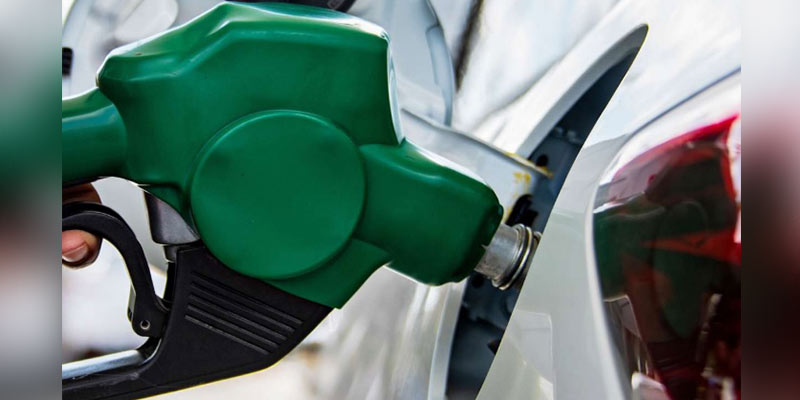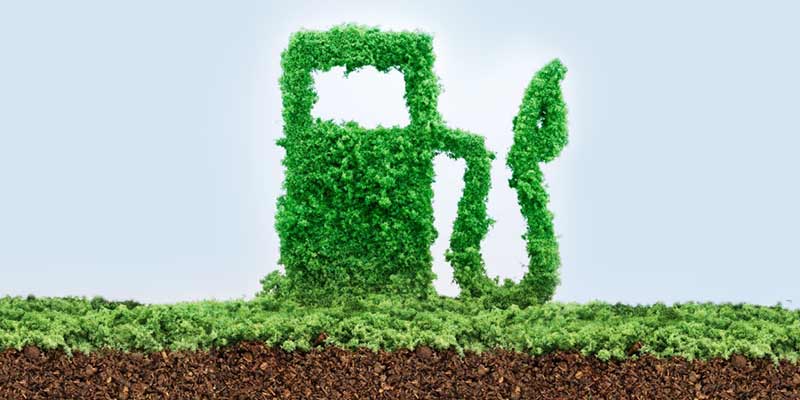- India
- Apr 06
Explainer / Blending of ethanol in petrol
The government extended the timeline for disbursement of loan for ethanol projects under different schemes till September 30 this year, as part of its efforts to boost domestic production and achieve ethanol blending of 20 per cent by 2025.
The move is aimed at facilitating entities to complete their projects and avail benefits of interest subvention.
Ethanol blending
• The energy demand in our country is rising due to an expanding economy, growing population, increasing urbanisation, evolving lifestyles and rising spending power. About 98 per cent of the fuel requirement in the road transportation sector is currently met by fossil fuels and the remaining 2 per cent by biofuels. Today, India imports 85 per cent of its oil requirement.
• Domestic biofuels provide a strategic opportunity to the country, as they reduce the nation’s dependence on imported fossil fuels. In addition, when utilised with appropriate care, biofuels can be environmentally friendly, sustainable energy sources. They can also help generate employment, promote ‘Make in India’, Swachh Bharat, doubling of farmers’ incomes and promote waste-to-wealth generation.
• Ethanol is one of the principal biofuels, which is naturally produced by the fermentation of sugar by yeast or via petrochemical processes such as ethylene hydration. It has medical applications as an anti-septic and disinfectant. It is used as a chemical solvent and in the synthesis of organic compounds, apart from being an alternative fuel source. It is an agro-based product, mainly produced from a by-product of the sugar industry, namely molasses.
• Ethanol blending offers significant advantages such as increase in Research Octane Number (RON) of the blend, fuel embedded oxygen and higher flame speed. These properties of ethanol help in complete combustion and reduce vehicular emissions such as hydrocarbon, carbon monoxide and particulate matter.
• The government launched Ethanol Blended Petrol (EBP) Programme in 2003 for undertaking blending of ethanol in petrol to address environmental concerns due to fossil fuel burning, provide remuneration to farmers, subsidize crude imports and achieve forex savings.
• Blending locally produced ethanol with petrol will help India strengthen its energy security, enable local enterprises and farmers to participate in the energy economy and reduce vehicular emissions.
• The government has promoted usage of biofuel in the country by notification of the National Policy on Biofuels (NPB), 2018 which allows use of multiple feedstocks for producing bio-ethanol for increased supply of ethanol for blending with petrol.
• With the vision to boost agricultural economy, reduce dependence on imported fossil fuel, save foreign exchange on account of crude oil import bill and reduce air pollution, the government has fixed a target of 10 per cent blending of fuel grade ethanol with petrol by 2022, and 20 per cent by 2025.
Rise in ethanol production capacity
• Ethanol distillation capacity of molasses-based distilleries was only 215 crore litres prior to 2014. In the past seven years, the capacity has increased by one-and-a-half times and is currently at 555 crore litres.
• Similarly, the capacity of grain-based distilleries has risen to 280 crore litres from 206 crore litres in 2013.
• Thus, the total ethanol production capacity in the country has reached 835 crore litres.
• However, ethanol production capacities are required to be enhanced to about 1,700 crore litres to achieve 20 per cent blending by 2025. The decision for extension of time line for ethanol projects would help in enhancing ethanol production capacities further.
• Till 2013, supply of ethanol to OMCs (oil marketing companies) was only 38 crore litres, with blending levels of only 1.53 per cent in ethanol supply year (ESY) 2013-14.
• The production of fuel grade ethanol and its supply to OMCs has increased by eight times from 2013-14 to 2020-21.
• In ESY 2020-21, the country touched a historically high figure of about 302.30 crore litres thereby achieving 8.10 per cent blending.
• In the current ESY 2021-22, about 141 crore litres ethanol have been blended with petrol thereby achieving 9.66 per cent blending. It is expected that in current ethanol supply year 2021-22, the country will be achieving 10 per cent blending target.
Extension of time period of schemes
• The Centre has notified different interest subvention schemes for sugar mills and distilleries during 2018-2021, with a view to increasing production of ethanol and its supply under Ethanol Blended Petrol (EBP) Programme, especially in the surplus season. This will also improve the liquidity position of the sugar mills enabling them to clear cane price arrears of farmers.
• The government is extending financial assistance in the form of interest subvention at 6 per cent per annum or 50 per cent of rate of interest charged by banks, whichever is lower, on the loans to be extended by banks for five years, including one-year moratorium.
• Under the schemes, the timeline for disbursement of loan for ethanol projects is up to March/April, 2022.
• Due to unavoidable and unfortunate situations caused by COVID-19, project proponents were unable to adhere to the time limit for disbursement of loan from banks/financial institutions and unable to complete their projects in a given time frame.
• Therefore, there is a need to extend the timeline for disbursement of loans under interest subvention schemes announced earlier during 2018-2021.
2G ethanol bio-refineries
• In February 2019, the Union Cabinet approved ‘Pradhan Mantri JI-VAN (Jaiv Indhan-Vatavaran Anukool Fasal Awashesh Nivaran) Yojana’ for promoting Second Generation (2G) ethanol production from cellulosic and lignocellulosic, including petrochemical route, in the country by providing financial support.
• Second Generation (2G) bioethanol is produced from agricultural residues and by-products, organic wastes, most preferably woody, grassy and waste materials as a feedstock, and biodegradable fractions of municipal and industrial waste.
• The studies indicate that lignocellulosic surplus biomass availability in India is around 12-16 crore tonnes per annum. If exploited, this has potential to yield 2,500 to 3,000 crore litres of ethanol per annum and has potential to reduce India’s dependence on imported crude oil considerably.
• 2G ethanol bio-refineries, apart from producing cellulosic ethanol, also produces pellets (from surplus lignin), biogas (which can be upgraded to Bio CNG), liquid CO2/dry ice (for supplies to poly houses and cold storages, which would support horticulture activity) and assured quality compost (which will increase farm yields and reduce chemical fertiliser consumption).
• Burning of crop residues is also a health hazard in northern India which is adversely affecting the environment by adding to greenhouse gas emissions. Similarly, landfills and municipal solid waste also add to the environment problems by causing soil and water pollution. Setting up of these 2G ethanol biorefineries will also help in addressing the above issues and will aid in improving the health of citizens.
Manorama Yearbook app is now available on Google Play Store and iOS App Store


